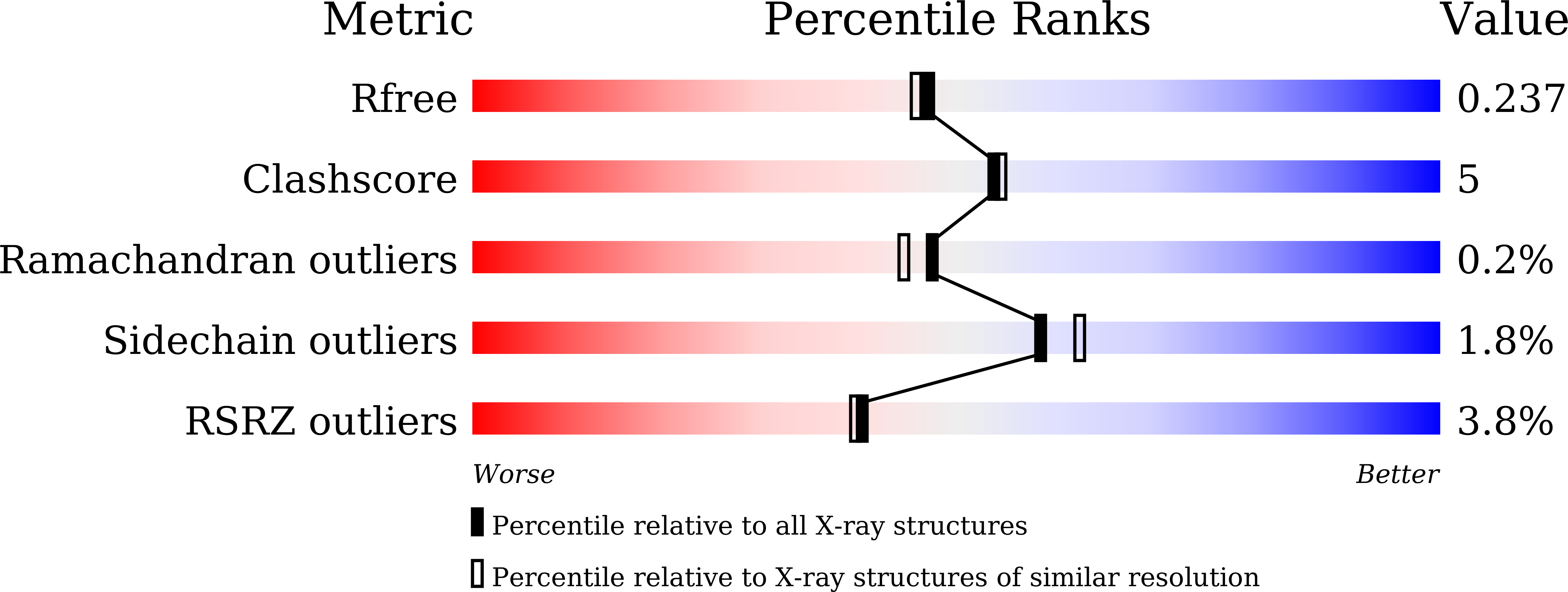Structural comparisons of host and African swine fever virus dUTPases reveal new clues for inhibitor development.
Liang, R., Wang, G., Zhang, D., Ye, G., Li, M., Shi, Y., Shi, J., Chen, H., Peng, G.(2020) J Biol Chem 296: 100015-100015
- PubMed: 33139328
- DOI: https://doi.org/10.1074/jbc.RA120.014005
- Primary Citation of Related Structures:
6LIS, 6LJ3, 6LJJ, 6LJO - PubMed Abstract:
African swine fever, caused by the African swine fever virus (ASFV), is among the most significant swine diseases. There are currently no effective treatments against ASFV. ASFV contains a gene encoding a dUTPase (E165R), which is required for viral replication in swine macrophages, making it an attractive target for inhibitor development. However, the full structural details of the ASFV dUTPase and those of the comparable swine enzyme are not available, limiting further insights. Herein, we determine the crystal structures of ASFV dUTPase and swine dUTPase in both their ligand-free and ligand-bound forms. We observe that the swine enzyme employs a classical dUTPase architecture made up of three-subunit active sites, whereas the ASFV enzyme employs a novel two-subunit active site. We then performed a comparative analysis of all dUTPase structures uploaded in the Protein Data Bank (PDB), which showed classical and non-classical types were mainly determined by the C-terminal β-strand orientation, and the difference was mainly related to the four amino acids behind motif IV. Thus, our study not only explains the reason for the structural diversity of dUTPase but also reveals how to predict dUTPase type, which may have implications for the dUTPase family. Finally, we tested two dUTPase inhibitors developed for the Plasmodium falciparum dUTPase against the swine and ASFV enzymes. One of these compounds inhibited the ASFV dUTPase at low micromolar concentrations (K d = 15.6 μM) and with some selectivity (∼2x) over swine dUTPase. In conclusion, our study expands our understanding of the dUTPase family and may aid in the development of specific ASFV inhibitors.
Organizational Affiliation:
State Key Laboratory of Agricultural Microbiology, College of Veterinary Medicine, Huazhong Agricultural University, Wuhan, Hubei Province, China; Key Laboratory of Preventive Veterinary Medicine in Hubei Province, The Cooperative Innovation Center for Sustainable Pig Production, Wuhan, Hubei Province, China.
















